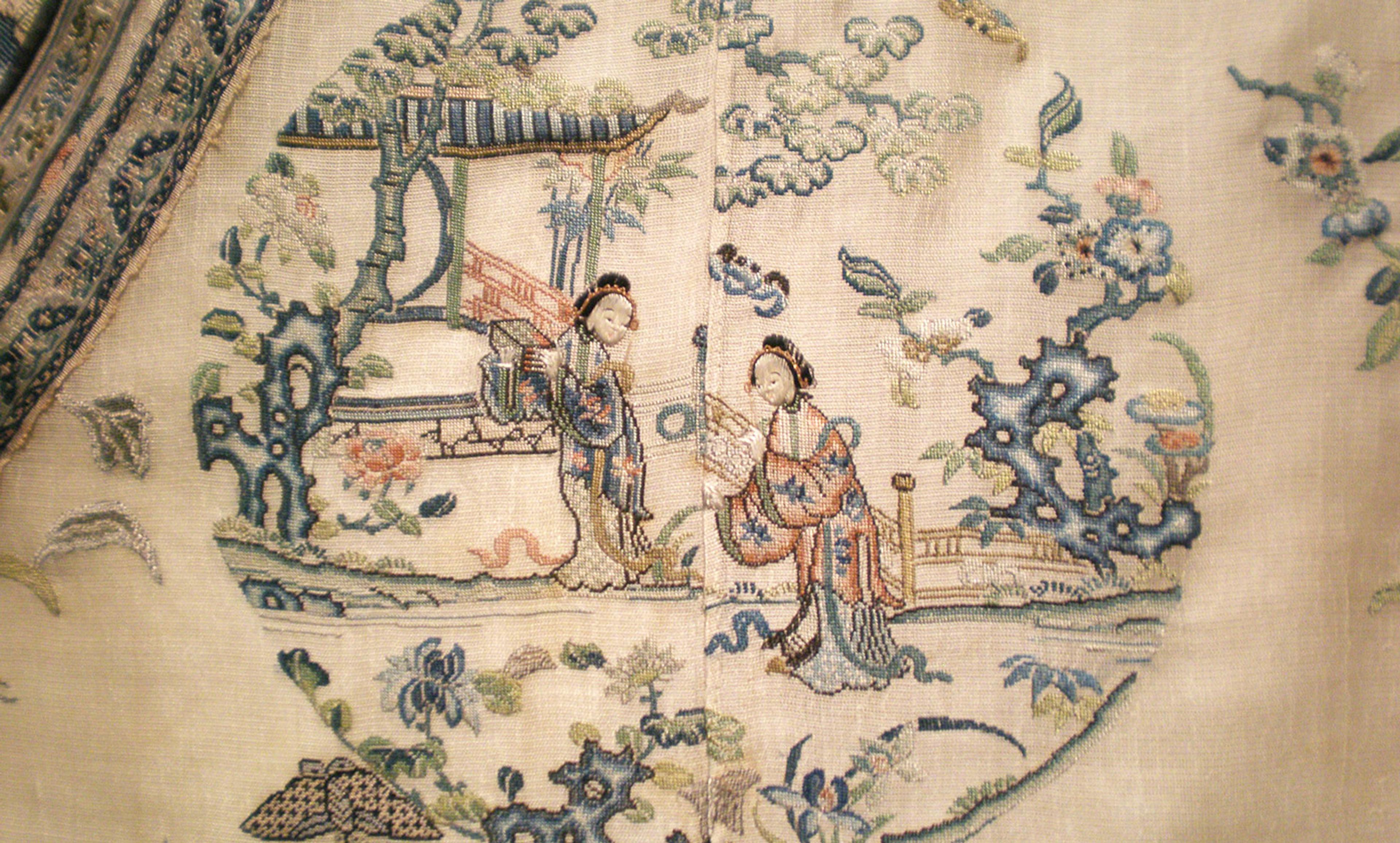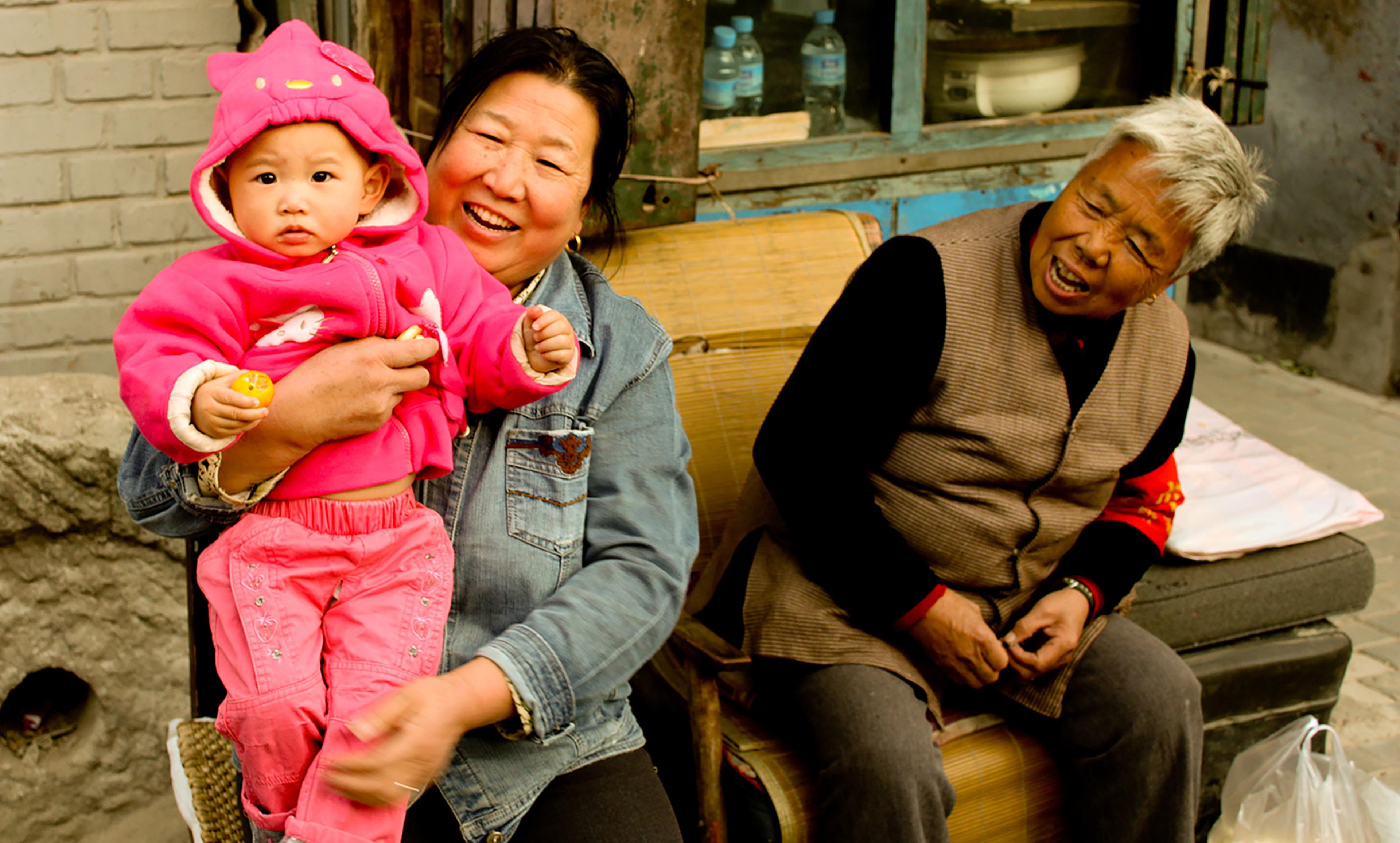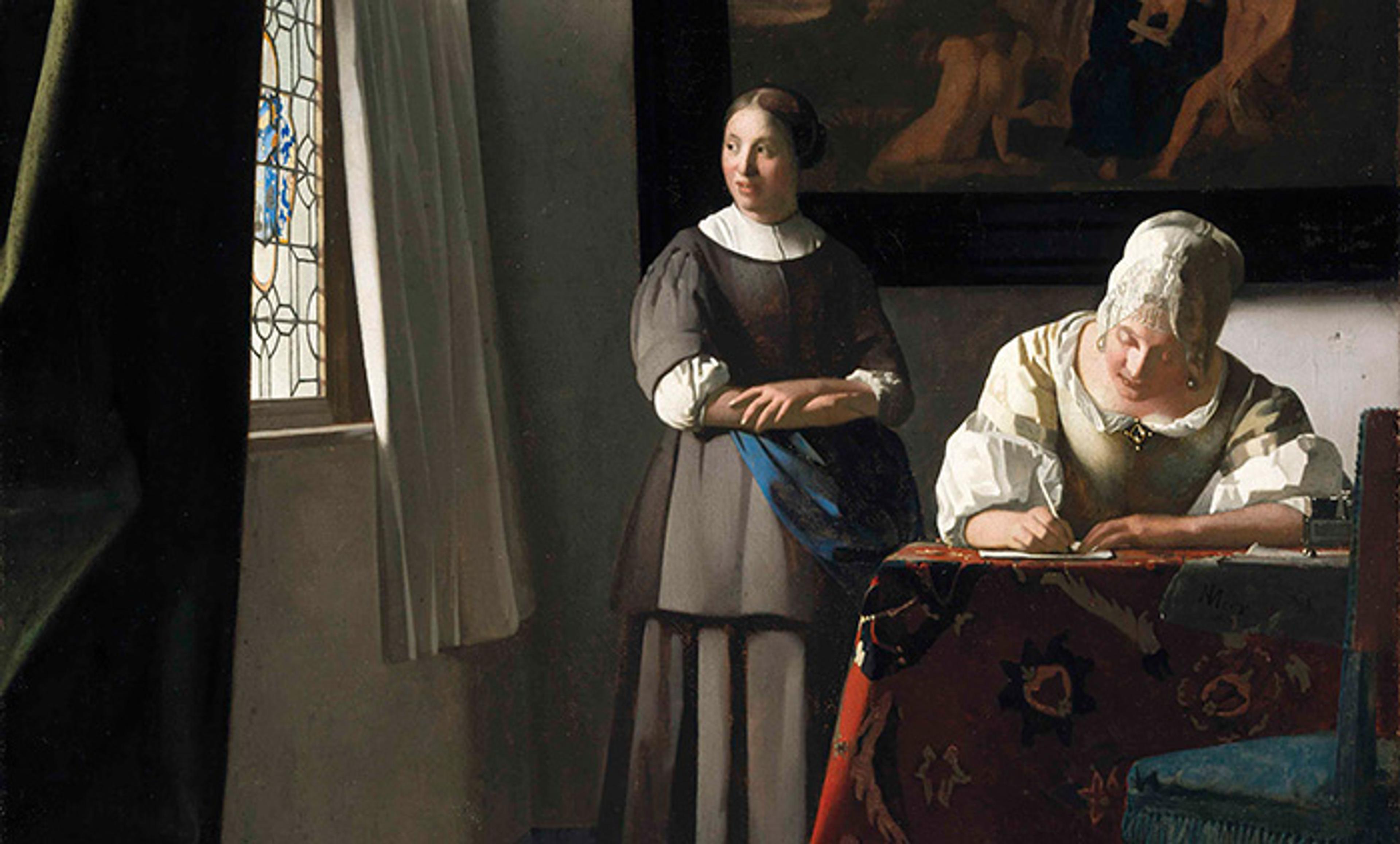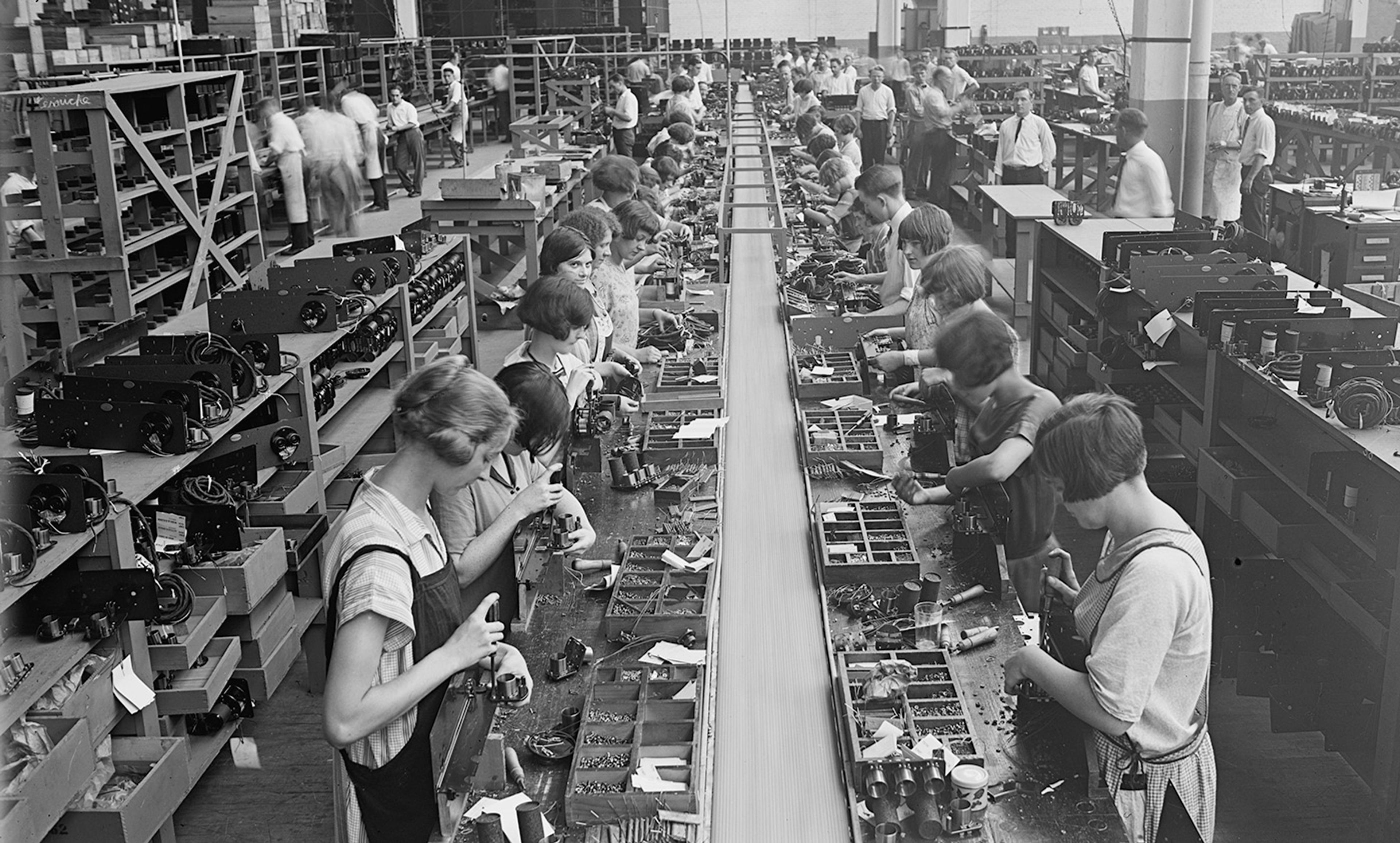Detail of the central embroidery work of a woman’s summer robe, c1875–1900. Courtesy Wikipedia
Many societies suffer from the notion that women are less intelligent and capable than men. Even in more economically developed countries, where women have in the past two centuries won a variety of political and economic rights, prejudice against women remains relatively common. So where does this belief come from? Is it possible for it to change?
The anthropologist Marvin Harris argued in Culture, People, Nature (1975) that male dominance initially gained credibility through male strength and men’s comparative advantage in warfare. Then, as professional soldiers took over warfare, inequalities between men and women became a matter of their relative contributions to economic production.
In China, as in much of the preindustrial world, women carried out most of the textile production. These women producers spent ‘every available moment’, in the words of E J W Barber’s book Prehistoric Textiles (1991), engaged in spinning, weaving and sewing textiles. Before the advent of cotton production, silk and hemp were the two main fabrics used for clothing. The cotton revolution in China started in 1300. The adoption of more advanced spinning and weaving technologies, in conjunction with a preexisting trade network throughout China, led to the production and exchange of cotton textiles on an immense scale. By 1840, cotton textiles accounted for a quarter of domestic trade.
The rise of cotton in China brought about a ‘golden age’ for women’s incomes. In this respect, it resembled proto-industrialisation in Europe and early industrialisation in early America. The difference is that, in the earliest industrialisations in Europe and the US, the period when women derived decent incomes from producing textiles lasted for merely one or two generations. In China, it was different. Cotton-textile production in China catalysed a very high level of female earnings for almost 500 years. A combination of home-friendly production methods, inefficient labour markets, and a state taxation system all contributed to this long period of high earnings for women.
In my research, I ask: did the cotton revolution affect cultural beliefs about women? The historian Kenneth Pomeranz has discussed how the elevated status of women in certain regions produced an ‘economics of respectability’. A woman who earned enough to support her family could be referred to, by others or herself, as a ‘she-husband’. Widows in areas suitable for cotton-textile production were far less likely to end their life upon the passing of their husbands.
Was this a long-lasting change or just a temporary adjustment to women’s enhanced earning ability? This question can be answered only by examining how women were treated after the demise of the premodern textiles industry. After 1840, traditional cotton-textile production became less economically relevant due to intense competition from British imports. In one of the earliest surveys available on the subject, when asked about their attitudes towards women, both men and women in counties with premodern cotton-textile production were much more likely to think that women were just as competent as men. Interestingly, the difference in the belief about women’s ability does not extend to some other modern gender norms. For example, Chinese women’s economic independence does not seem to alter conservative attitudes towards marriage or premarital sex.
To measure the legacy of cotton-textile production in China, I examined data on the sex ratio at birth (SRB, or the number of boys born per 100 girls) in China in 2000. The prevalent use of ultrasound screening from the 1990s onwards meant that many Chinese parents could effectively sex-select their children. In 2000, the average SRB in China was 118 boys per 100 girls, but areas with a history of premodern cotton-textile production had a lower SRB. Specifically, the average SRB in cotton-textile producing areas was 114 boys per 100 girls, reflecting a lower occurrence of sex-selective abortion.
One possibility is that parents had been performing sex-selective abortion based on the expected economic value of having a boy or a girl. However, there is little evidence that women today are a better economic bet for parents in countries that once produced cotton textiles. In the 2000 census, premodern cotton-textile production did not predict either the level of female labour-force participation, or the number of hours that women worked. This highlights the non-economic channels, such as culture, that underlie the effects of premodern cotton-textile production on sex-selective abortion.
Perhaps even more strikingly, where state socialism made economic opportunities and legal rights virtually identical for married men and married women, premodern cotton-textile production is linked to a higher likelihood for the wife to be the head of the household. In this context of state socialism, household head status conveyed no information about physical ownership of property, but rather, reflected information about the role of the husband vs the wife in the household. Not surprisingly, most of the households opted for male heads of household. The fact that married couples were more likely to agree on having the wife as the household head if they were from an area that formerly had cotton-textile production suggests that there is long-term cultural change from women’s economic agency.
Economists have been asking why the gender wage gap persists for decades. Answers range from theories or suggestions that men are more productive than women; notions that men and women vary in important behavioural traits that have consequences for their earnings; and that there exists a set of beliefs and attitudes that systematically disadvantage women. Recent studies have shown that certain aspects of gender norms and gender roles, such as the gender-identity norm, are extremely resilient.
Using a detailed historical case – the cotton revolution in China – we can see that patriarchal beliefs are indeed highly resilient but also that they can be transformed by a sufficiently large increase in women’s productivity. The image of highly productive women positively shapes cultural beliefs about women’s ability, and then translates into a more positive view about women in general.
More broadly, although economic forces do not dictate a value system, there is potential for economic forces to transform the value system. This includes one of the most resilient elements of a value system – beliefs and attitudes towards women.






